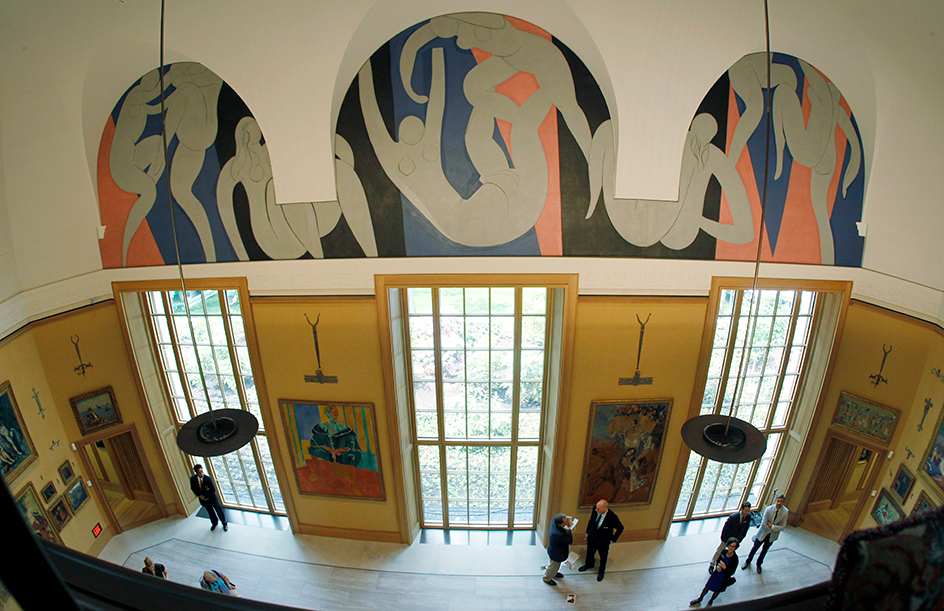Matisse, Henri << mah TEES, ahn REE >> (1869-1954), a French painter, was one of the most influential artists of the 1900’s. He is best known as the father of the modern art movement called Fauvism. The Fauves used large flat areas of bright color and strong lines in expressive and decorative ways while remaining faithful to traditional subjects such as landscapes, still lifes, interiors, and portraits. Matisse executed his experiments with form and color in several media, including painting, sculpture, drawing, prints, and paper cutouts.

Henri Émile Benoît Matisse was born on Dec. 31, 1869, in Le Cateau, near Cambrai. In 1891, he moved to Paris, where he studied painting and drawing. In 1897, he began to experiment with modern approaches under the influence of the Impressionist painters, who tried to capture fleeting impressions and the effects of light. Matisse gradually learned to paint with lighter colors and bolder brushwork while working outdoors.
Matisse spent the summer months of 1904 and 1905 on the Mediterranean coast. The effects of Mediterranean light made an immediate impact on him. He began to paint in a more abstract style, with color as the dominant feature in his paintings.
Returning to Paris in 1905, he exhibited his new pictures at the annual Autumn Salon. His paintings, along with the works of such fellow French artists as André Derain and Maurice Vlaminck, established the Fauve movement. Matisse’s new paintings used brash colors and heavy outlining of form that seemed crude and unruly to the public and critics. One critic called the artists fauves, which is French for wild beasts.

From 1905 to 1910, Matisse developed a huge reputation in Paris. He made his paintings larger, more exotic, and richer in color as a response to the Spanish artist Pablo Picasso’s experiments in form, known as Cubism.
From 1910 to 1912, Matisse traveled in Spain and Morocco, studying the Moorish style of architectural ornamentation. His immersion in Moorish and Islamic art enriched the decorative qualities of his work for the next 20 years, as he packed his paintings with colorful objects, textiles, and costumes. In 1917, Matisse moved to Nice. There, until 1930, he abandoned his abstract approach and focused on a more direct, naturalistic style.
During the 1930’s, Matisse returned to abstraction and the expressive use of color. Starting about 1940, the artist began a major project with cutout paper. He cut directly into the brightly colored surfaces of the paper, making abstract shapes that he grouped into large-scale compositions. From 1948 to 1951, Matisse worked exclusively on the Chapel of the Rosary in Vence, France. For the chapel, he executed a variety of stained-glass windows, line drawings on ceramic tiles, and other interior decorations. Matisse died on Nov. 3, 1954.
